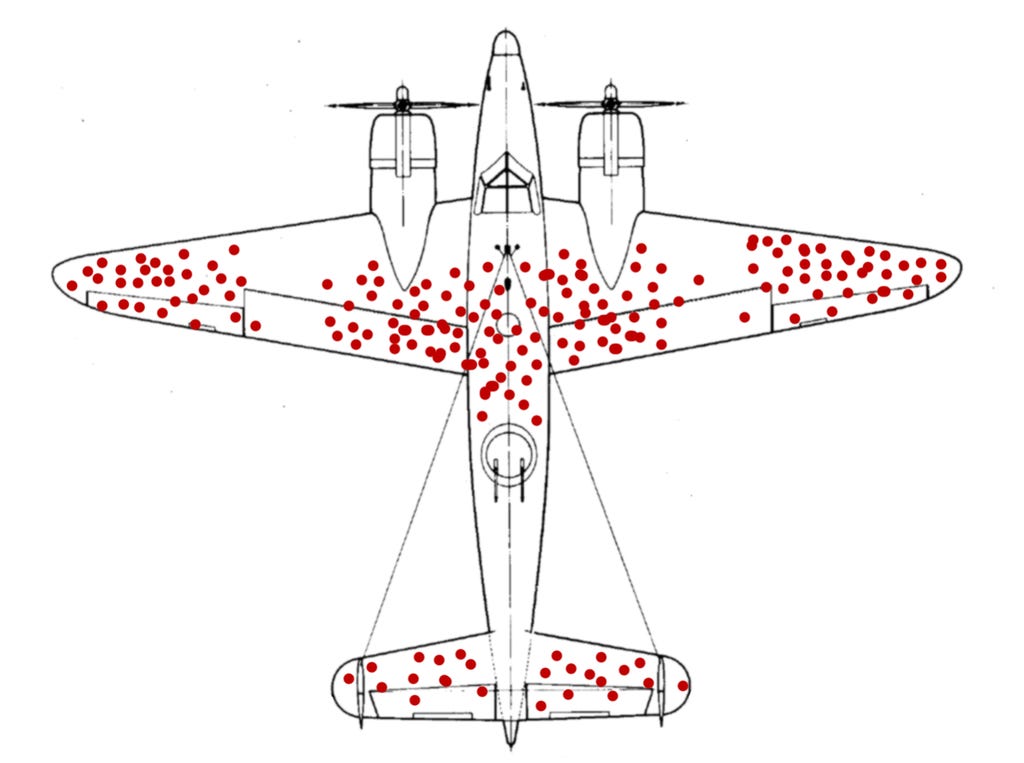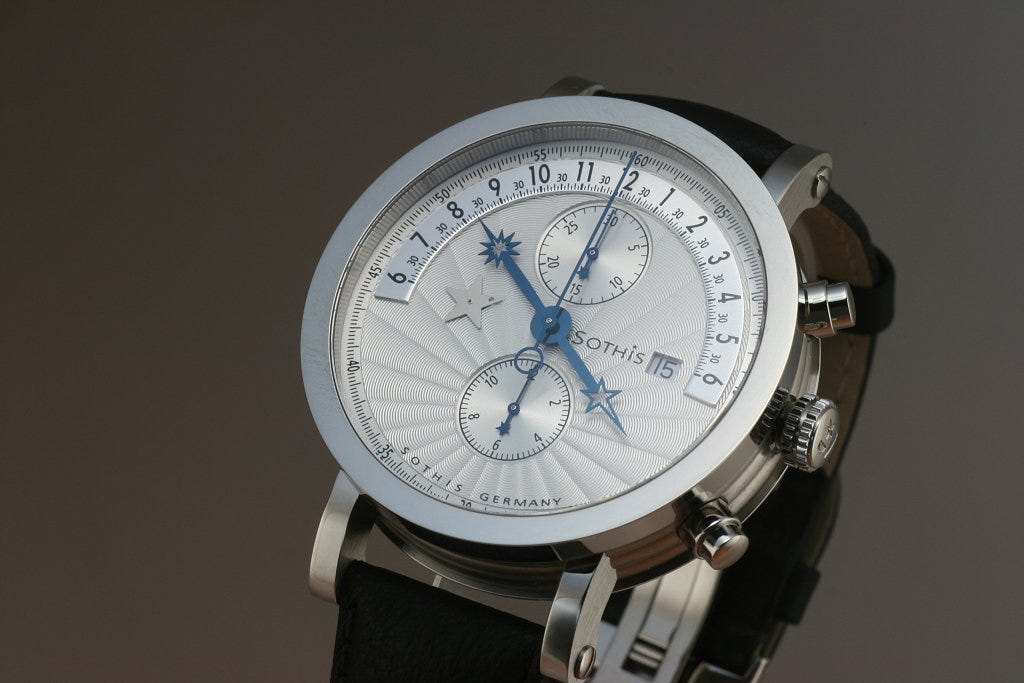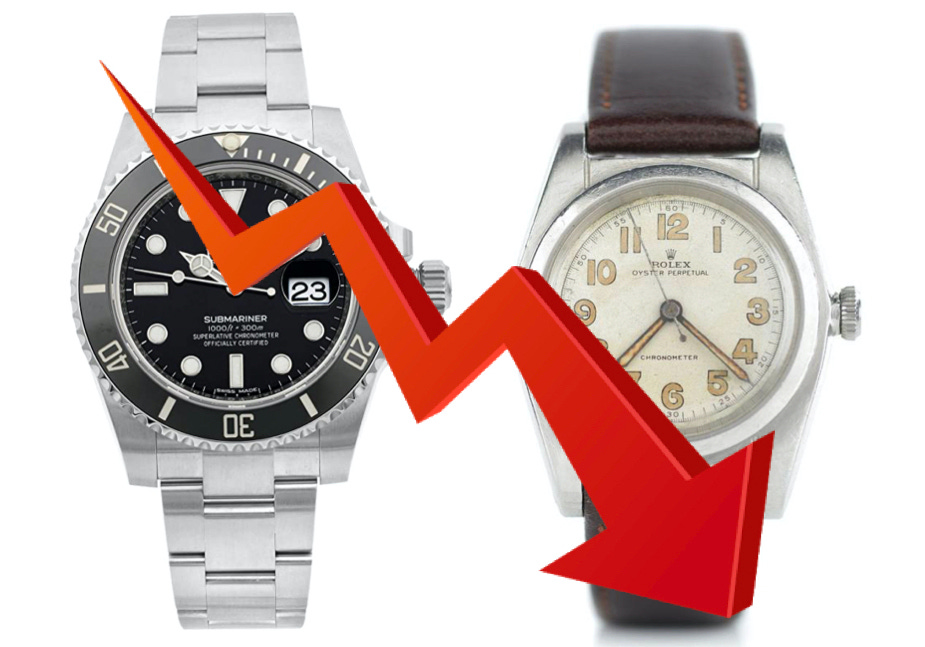The Bubble(back) did burst
On survivorship bias and the beguiling market for stainless steel watches
By Brendan M. Cunningham, PhD
It would be natural for watch collectors to wonder if the law of gravity holds when it comes to watch prices. It seems like they just keep going up and up. As Ben Clymer recently discussed, in 2018 two examples of the Rolex MilSub reference 5513 sold at auction for $175,000. At Phillips’ December 2020 Racing Pulse auction, a MilSub sold for $567k. And MilSubs are not alone. A Heuer Monaco achieved a new record in 2020. Before that, a Patek Philippe Worldtimer reference 2523/1 set a record for that reference. Skyrocketing prices are not isolated to a few watches.
History contains meteoric and astonishing price increases for many objects. The list includes tulip bulbs, real estate, and tech stocks. In August 2005, U.S.-based Google searches for the term "housing bubble" reached a peak. Many wondered if the froth of the housing market had reached an unsustainable volume that would soon pop. Not much later, that curiosity became reality. Housing prices began a downward spiral less than a year later, in July of 2006. In case you're wondering, Google search counts for "watch bubble" aren't currently flashing a similar warning sign.
Rapid price increases almost inevitably attract speculators, that is, people who hope to make a short-term return by acquiring an appreciating item. Such speculators like to view the item as an "investment," akin to stocks. A risk for these individuals, and other market participants, is that they succumb to an error known as "survivorship bias."
👉 Want more market analysis like this? Subscribe to the weekly newsletter:
What is survivorship bias?
During World War II, the US Army turned to a classified program housed at Columbia University called the Statistical Research Group (SRG). The Army had a problem. Too many bombers were shot down during sorties over Germany (at that time the Army commanded both airplanes and infantry). The number of bullet holes, and their location on returning bombers, had been tallied and recorded. The Army wanted the brains at SRG to help them figure out where they should bolster armor on the planes. The Army was inclined to put armor where the largest number of bullet holes were observed (fuselages were particularly prone to damage). The renowned statistician Abraham Wald, a member of the SRG, pointed out a major flaw in this plan.

Wald noted that the Army could only assess the damage on surviving planes. The sample of airplanes was not randomly selected. The Army didn't, and couldn't, observe bullet holes on the planes that were casualties of German anti-aircraft defenses. Wald pointed out that those bombers were likely hit in spots where surviving aircraft weren't hit. Therefore, the armor should be concentrated on the undamaged spots of returning aircraft if the Army wanted to increase bomber survival.
(Sea)Dwelling on survivorship bias
Survivorship bias can easily mislead watch collectors too. Examples abound of watches with astounding price increases, as described earlier. In 2007 the list price for a Rolex SeaDweller reference 16600 was $4,700. According to Chrono24, the current estimated value for this reference is $10,400, an appreciation of roughly 120% or ~6.3% annually (in comparison, the return for all stocks in the United States was roughly 9.3% over the same timeframe).
Have you ever heard of SOTHiS watches? In 2007 their Horus reference, featuring chronograph and date complications (based on a Valjoux 7750), was on the cover of Wristwatch Annual. Its list price was similar to the Rolex SeaDweller, at $4,500. SOTHiS was highly regarded — one of their references won a German "Golden Balance" award in 1998. I found two unsold examples of the Horus on eBay, the lowest was priced at $2,150. That is a loss of at least 48% (5.5% annually).

In order to determine the return on watches, we can't focus only on the highly successful brands such as Rolex. If we ignore the outcome for a brand like SOTHiS, which was liquidated in 2013, we are prone to over-optimism, just as the Army was biased in its beliefs about where WW2 airplanes were struck by bullets.
Bubbles and the Bubbleback
The history of the Rolex Bubbleback market is turbulent, defined by high highs and lower lows. Looking at auction records illustrates the ride. For example, in May and November 2000, Christie’s sold five examples of the Rolex Oyster Professional Reference 3065 with an average price of $16,000. In contrast, examples of this reference selling at major auction houses (Antiquorum and Christie’s, in particular) over the past year had an average price of $13,200. This implies a loss of approximately 18% over 20 years, or roughly a 1% loss per year. Data from Roundtable Vintage shows that 23 recent auction sales of the Bubbleback design (multiple references) had an average price of $5,139. Even the Rolex back catalog contains designs that have lost value in the long run.
Watch collectors should take solace in the fact that a man who understood astrophysics better than any of his contemporaries, Sir Isaac Newton, stumbled when it came to interpreting the value of assets. Estimates are that he lost as much as $20 million while buying and selling shares in the South Seas Company in the 18th century. He observed that he "could calculate the motions of the heavenly stars, but not the madness of people." It is no wonder that luxury watch pricing is similarly beguiling.
Brendan Cunningham is a Professor of Economics at Eastern Connecticut State University and Contributor to Time + Tide Watches. You can follow him on Instagram @katimepieces.
Rescapement is a weekly newsletter about watches, mostly vintage. Subscribe now to get it delivered to your inbox every Sunday. Follow us on IG too.




